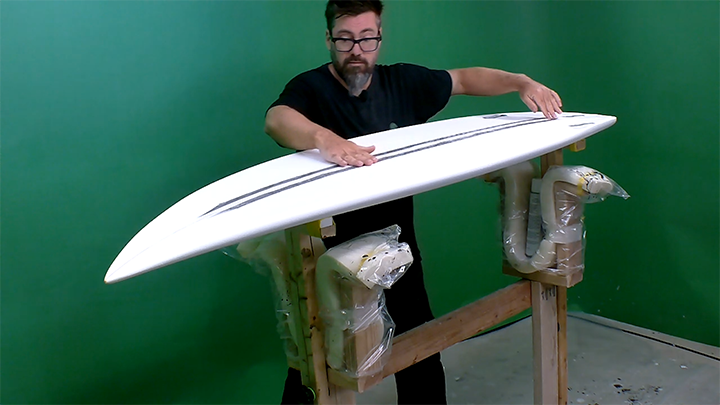
Stringered vs. Stringerless Surfboards: Unveiling the Core Differences
Surfing, an exhilarating dance with the waves, requires a perfect synergy between the surfer and their board. Among the myriad factors influencing a board's performance, the presence or absence of a stringer stands out as a crucial design element. Stringers, long, thin wooden or foam strips running down the center of a surfboard, have been an integral part of board construction for decades. However, the advent of stringerless designs has sparked a spirited debate among surfers and shapers alike. In this blog post, we delve into the key differences between stringered and stringerless surfboards to help you navigate the wave of choices.
Stringered Surfboards: The Traditional Backbone
Stringered surfboards, often considered the quintessential design, owe their legacy to the need for reinforcing Polyurethane foam blanks because they are inherently weak. The stringer, typically made of wood, acts as a central backbone, lending strength, stiffness, and controlled flex to the board. This design enhances stability, provides predictable performance, and allows shapers to fine-tune the board's characteristics. Stringers absorb energy and distribute forces evenly, resulting in a responsive feel and improved durability.
Stringerless Surfboards: Embracing Innovation
Stringerless surfboards, on the other hand, represent a departure from tradition, embodying the spirit of innovation and experimentation. With advancements in EPS foam and manufacturing techniques, shapers have developed stringerless designs that challenge the status quo. These boards typically feature composite materials, carbon fiber strips, or alternative foam cores to achieve a balance between strength, flexibility, and weight reduction.
Advantages of Stringerless Surfboards:
-
Enhanced Flex and Performance: Stringerless boards often exhibit dynamic flex patterns, allowing surfers to generate speed and maneuverability in a unique way.
-
Weight Reduction: By eliminating the wooden stringer, these boards tend to be lighter, translating to increased agility and responsiveness in the water.
-
Progressive Design: Stringerless boards open doors for innovative designs, pushing the boundaries of surfboard aesthetics and performance.
Choosing the Right Design: Factors to Consider
The choice between a stringered and stringerless surfboard ultimately boils down to personal preference and surfing style. Novice surfers may find stringered boards to be more forgiving and stable, aiding in skill development. Intermediate and advanced surfers, seeking to push their limits and experiment with maneuvers, may gravitate toward the dynamic nature of stringerless designs.
As far as shaping boards with or without stringers, it's much easier and quick to shape a stringerless blank.. no wood working tools required! Also, you're not bothering with the critical step of getting two dissimilar material densities (wood and foam) flush with each other so the fiberglass cloth bonds everything evenly. A slightly proud stringer will result in a void between the stringer and fiberglass ultimately resulting in a fiberglass crack and delamination.
Stringerless EPS foam blanks on the other hand, require very little shaping work (even less when you order a custom blank from Greenlight). You can choose to add carbon fiber reinforcements to the bottom of deck of the board when glassing and dial in strategic points of stiffness (through the middle) and flex (in the tail, usually). You can also choose to just have a stringerless blank with just a glue line acting as a moderate reinforcement, creating a slighty stiffer, even flex distribution from tip to tail, (Brian from Greenlight's personal preference) or leave the blank without extra reinforcement and let the fiberglass shell rule the flex. Boards are plenty strong that way too and have a little more bounce...
In the ever-evolving world of surfing, the debate between stringered and stringerless surfboards serves as a reminder of the sport's rich history and its relentless pursuit of progress. Both design approaches have their merits, catering to diverse skill levels and riding preferences. As you embark on your next wave-riding adventure, consider the advantages of each design and choose the board that resonates with your surfing aspirations. Whether you opt for the traditional stability of a stringered board or the avant-garde performance of a stringerless design, the ultimate goal remains the same – to carve unforgettable moments on the waves.
